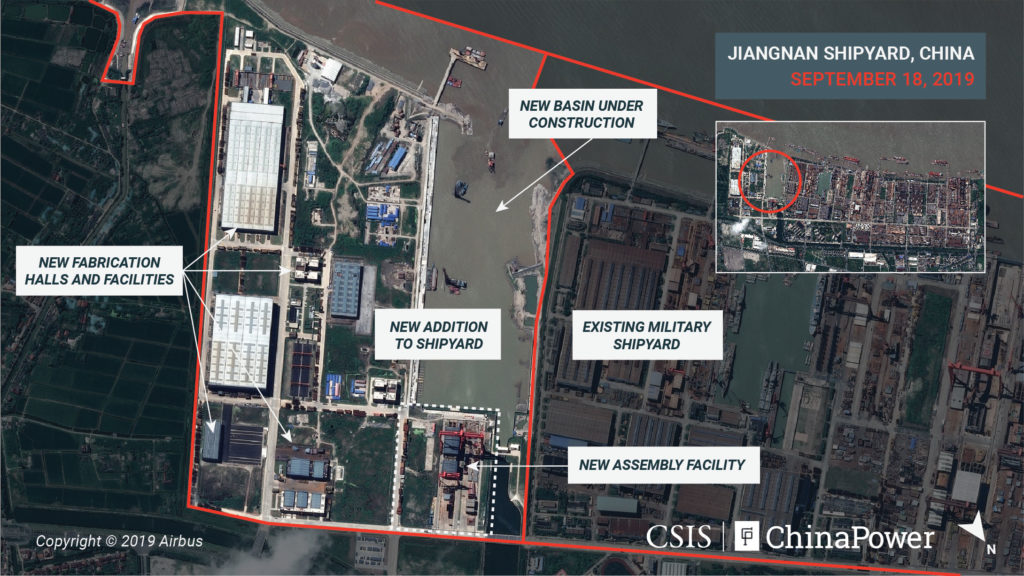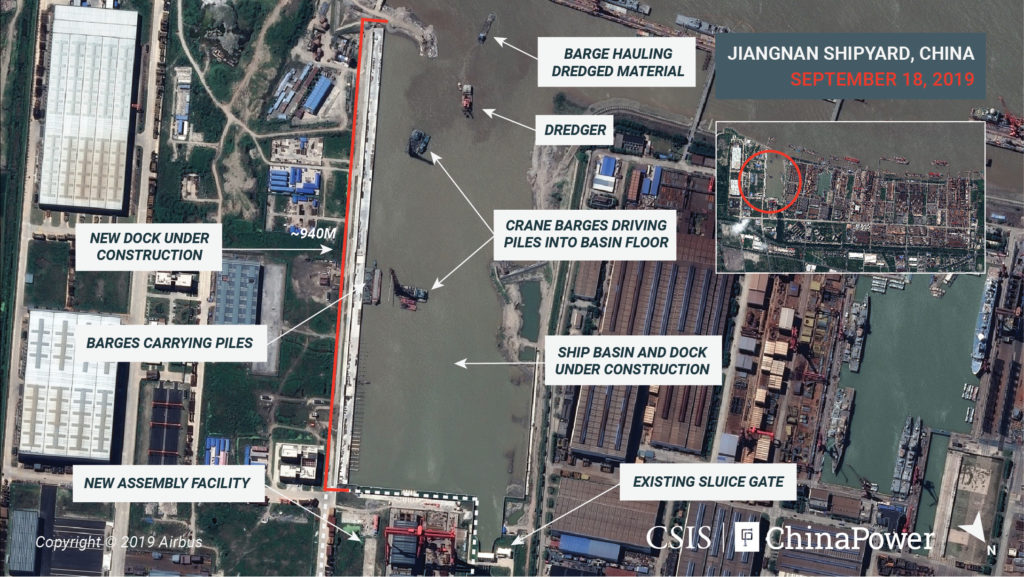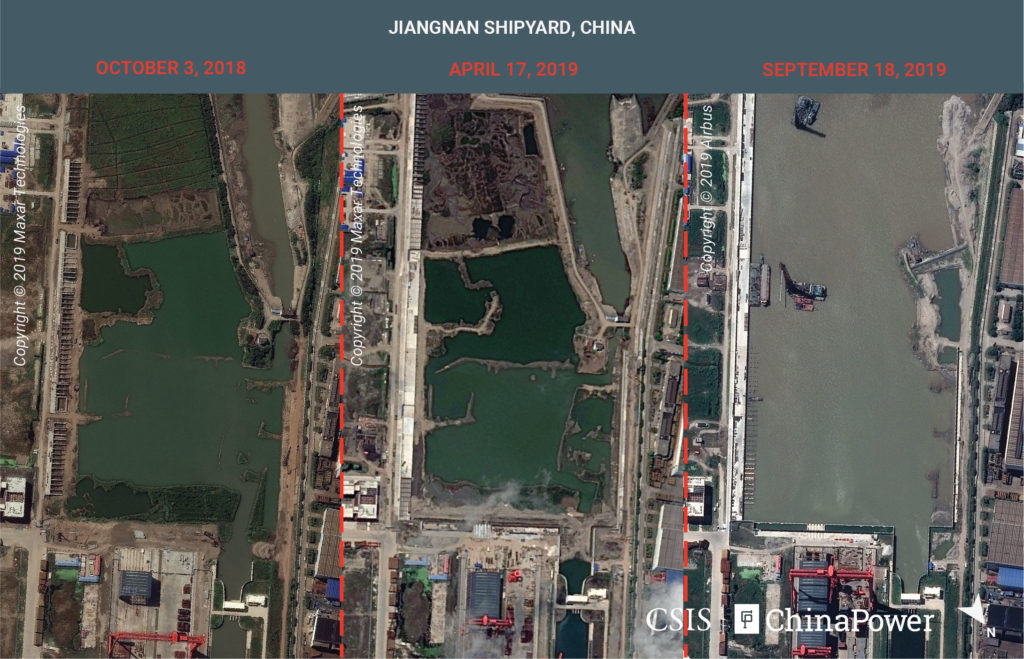CSIS China Power: Tracking China’s third aircraft carrier

The construction of China’s third aircraft carrier appears to be progressing at Shanghai’s Jiangnan Shipyard. Commercial satellite imagery collected on September 18, 2019 shows significant new activity since our last report on May 6, 2019. At that time, our analysis concluded that the large vessel under construction at Jiangnan is consistent with what is expected to be the third aircraft carrier of the People’s Liberation Army Navy (PLAN). Imagery from September reveals incremental progress on the vessel’s construction and significant enhancements to the surrounding infrastructure.


The vessel remains in the early stages of construction. Although environmental shelters hide much of the ongoing activity, portions of the vessel’s hull are visible. The latest imagery confirms earlier estimates that the water-level beam of the hull will measure approximately 40 meters in length. What appears to be the vessel’s stern is also partially visible near the launching way, which is consistent with expectations that the vessel will be launched stern-first. The stern appears unfinished and will likely see further additions that will make the vessel’s rear more rounded. What is exposed of the ship’s bow tapers from a width of 38 meters to 34 meters.

A second tower crane has been added to the assembly facility, suggesting that construction is progressing steadily. These tower cranes will be used to lower prefabricated components into the hull. While they are partially obscured by a gantry crane in the satellite imagery, low-altitude imagery corroborates the presence of the new tower crane.
Prefabricated ship components await assembly near the vessel’s hull and on the roads adjacent to the assembly facility. These components include internal deck sections measuring approximately 12 meters by 27 meters in size, which will in time be positioned within the hull. There are also several bulkheads, each measuring approximately 39 meters in length, which will be affixed to different portions of the ship. Additionally, there are two tapered hull components (approximately 38 meters in length) that could be used to form part of the v-shaped portion of the bow.

Given the current status of the vessel and the pace of construction thus far, hull construction is likely to continue for approximately the next 12 months. Once the hull is completed, internal components and deck sections will be added. This will be followed by the addition of the vessel’s superstructure (the features that appear above the main deck), such as the island (assuming the vessel is in fact an aircraft carrier). During this stage, workers will need to remove the environmental shelters, which should allow for a more complete view of the vessel.
Significant progress has been made on the newly constructed basin where the vessel is likely to be outfitted. Work has begun on what appears to be an approximately 940-meter-long dock on the eastern side of the basin. A new seawall is being added across from the dock, where the existing flood control system and surrounding sediment are waiting to be removed. When completed, the new basin is expected to be nearly three times larger than the existing floodable basin situated within the military shipyard.
The presence of a dredger and a barge hauling dredged material indicates that efforts to deepen and clear out the basin are ongoing. Two crane barges can also be seen driving piles into the basin floor to improve the basin’s stability. The reinforcement of the basin floor suggests that the area is being prepared for berthing and fitting-out large vessels.
The upgrades to the new basin adjacent to the assembly facility suggest that (once launched) the vessel will be outfitted in the basin. However, it would not be unreasonable for the vessel to be moved elsewhere within Jiangnan Shipyard as progress continues.
| Chinese Aircraft Carrier Comparison | |||
|---|---|---|---|
| Liaoning | Type 001A | Third carrier | |
| Design | Soviet | Chinese | Chinese |
| Length | 304.5m | 315m | – |
| Beam | 75m | 75m | – |
| Waterline Beam | 35m | 35m | 40m (estimated) |
| Launch Type | STOBAR | STOBAR | CATOBAR |
| Displacement | 60,000 – 66,000 tons | 66,000 – 70,000 tons | 80,000 – 85,000 tons (estimated) |
| Propulsion | Conventional | Conventional | Conventional |
| Shipyard of Origin | Dalian (refit) | Dalian | Jiangnan |
| Sources:Various | |||
| Figures for the third carrier are likely to change as more information becomes available. | |||
Various unofficial reports speculate that the conventionally-powered third carrier will be larger than its predecessors and will feature an electromagnetic catapult launch system. The carrier is projected to be operational by 2022.






